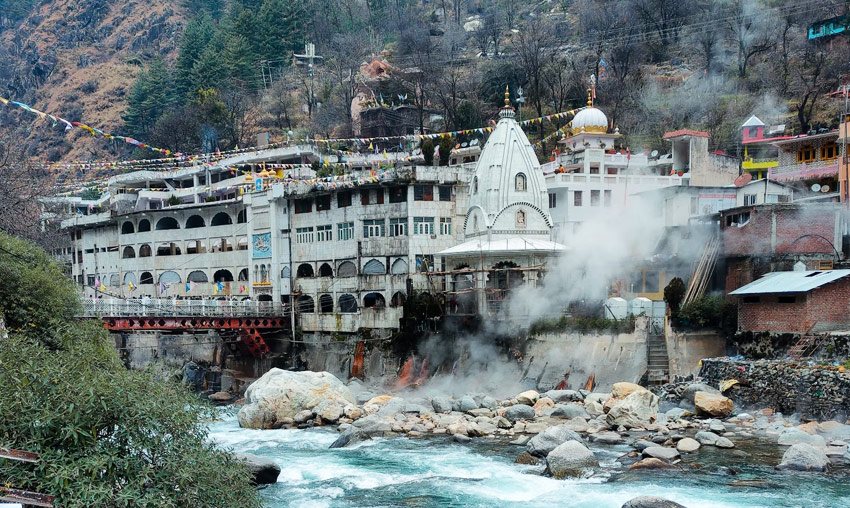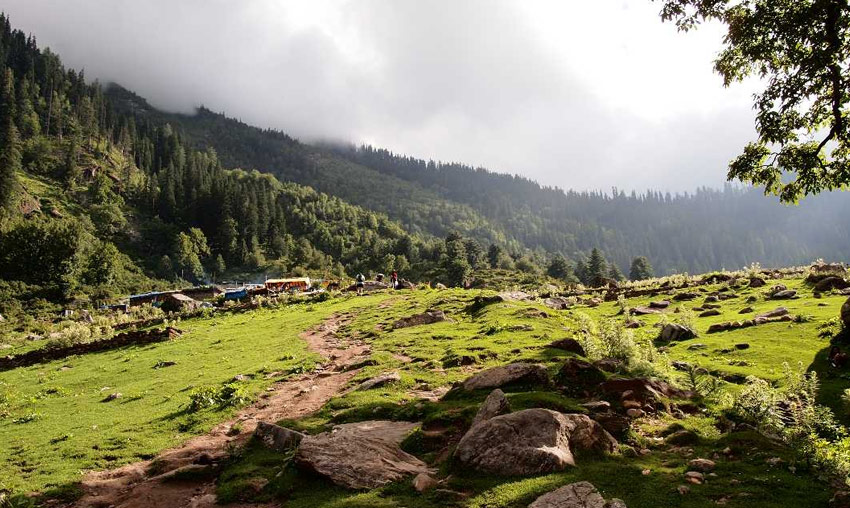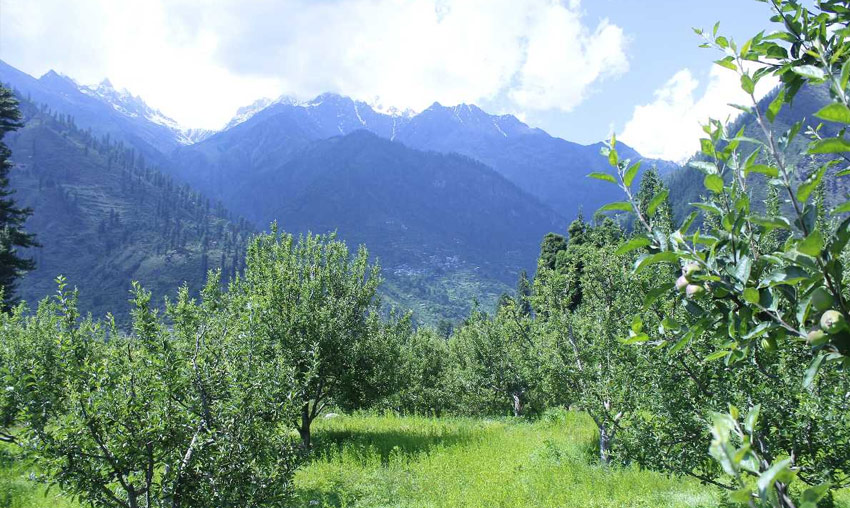Gurudwara Shri Manikaran Sahib – History, Timings, Facts
Manikaran Sahib, a major sacred place for both Sikhs and Hindus, is situated in the Parvati Valley approx 80KM from Manali and 43KM from Kullu in Himachal Pradesh. This pilgrimage site, which is famous for its gurudwara, ancient temples, and hot springs, is tucked away in the picturesque Himalayas. The main justification for going to Manikaran Sahib is its spiritual significance, which gives guests an opportunity to seek blessings and immerse themselves in the heavenly atmosphere.
Manikaran Sahib is well-known for its natural hot springs, which are thought to have therapeutic benefits and draw both visitors and devotees. The gurudwara, known as Sri Guru Nanak Dev Ji Gurudwara, bears tremendous importance for Sikhs as it is claimed that Guru Nanak Dev Ji visited this region during his journeys. Pilgrims looking for spiritual blessings and comfort are also drawn to the Hindu temples devoted to Lord Shiva and Goddess Parvati. The setting, which is surrounded by tall mountains and tucked away in the Parvati Valley’s rich vegetation, contributes to the area’s tranquil atmosphere.
In addition to its religious significance, Manikaran Sahib provides trekking and hiking trails for tourists to enjoy the Himalayas’ natural splendor. Another attraction is the local food, which is well-known for its genuine Himachali flavors. Tourists particularly like traditional meals like siddu, babru, and thukpa. Manikaran Sahib is a complete location for spiritual renewal and cultural inquiry because of its vibrant markets, which provide an insight into the local way of life.
Along with its religious and cultural features, Manikaran Sahib attracts tourists and devotees from all over the nation with its annual fairs and festivals, such as the Maha Shivaratri festival and Guru Nanak Jayanti. For those looking for a peaceful haven amidst the magnificent Himalayas, Manikaran Sahib is a must-visit location because of its serene surroundings and spiritual ambiance.
Things to do in Manikaran Sahib
1. Manikaran Sahib Gurudwara
Giani Gian Sikh’s ‘Twelfth Guru Khalsa’ mentions Manikaran Sahib Gurudwara. The Guru Nanak and his five disciples are said to have visited this Gurudwara, which is a highly esteemed place of worship for Sikhs.
2. Shiv Temple Manikaran
This location, which is a widely regarded temple devoted to Lord Shiva, draws a lot of pilgrims and tourists all year long. An earthquake in 1905 caused some damage and tilting to the temple, which was built entirely in the name of Lord Shiva. It is stated that Kullu devtas frequently visit this temple.
3. Manikaran Hot Springs
Uranium and other radioactive elements can be found in Manikaran’s hot springs, which are thought to have therapeutic properties. The water in these is so hot that it is possible to boil rice in them. In addition, pilgrims and visitors consider these hot springs to be sacred, which makes them well-liked in this area.
4. Kulant Pith
Of all the piths in India, the Kulant Pith is regarded as the most superior and revered. It is thought that Lord Shankar, who was greatly struck by the location, also spent some time here. The presence of Lord Shiva attests to the location’s sanctity. It is said that a dip in Vishnu Kund, the purest of all the kunds, will cleanse you of all your sins. Additionally, the villagers think that anyone who dips into this spot loses all of their wickedness and rage.
5. Lord Ramachandra Temple
The temple, which was constructed in the 17th century by Raja Jagat Singh, is a well-known religious hub in the region. According to the temple’s tradition, it was carried from Ayodhya by Lord Ram himself. The magnificent idols of Lord Ram and Goddess Sita are another reason for the fame of the Lord Ramachandra Temple. With three halls and forty rooms for the visiting devotees, it is situated in the heart of the city. Langar is set up for every single devotee.
Stories and Legends Behind the existence of Manikaran
Both Sikhs and Hindus, who have different motivations for their beliefs, consider Manikaran to be sacrosanct.
The Hindu Legend
As the name implies, gem or Mani is the source of the Hindu legend Manikaran. The location’s beauty captivated Hindu Lord Siva and his spouse, Goddess Parvati, who decided to remain here for 1100 years. Goddess Parvati was unhappy when she lost her Mani in the stream while they were there. When Shesh Naag, a serpent, grabbed the Mani, Lord Shiva became enraged and performed tandav, a dance, to reclaim the Mani. The hot springs and boiling water were created by the hissing of the serpent. The gems likening to that of Parvati’s sprung up all over the spilt water. Since then the place got the name, Manikaran. The jewels continued to spring up until the earthquake of 1905.
The Sikh Legend
Sikhs claim that during the third Udasi in 1574, Guru Nanak Ji, the founder of Sikhism, and his disciple Bhai Mardana visited this place. Since there was no food and Mardana was feeling peckish, Guru Nanak Ji dispatched him to get food for Langar. To create rotis, people donated flour. They had the ingredients, but they couldn’t cook because there wasn’t enough water. The rotis initially floated in a hot spring that formed when Mardana picked up a stone as instructed by Guruji. To his surprise, the chapatis not only floated but also transformed into edible material. Nanak Ji suggested that he pray to God that if these chapatis float back, he will contribute one in his name. Since then it is believed that if you donate something there in the name of god you are likely to get the lost items back. This Gurudwara is also mentioned in the ‘Twelfth Guru Khalsa’ by Giani Gian Sikh which makes it more pure and significant for its disciples.
Best time to visit Manikaran Sahib?
October through May are the ideal months to visit Manikaran Sahib because of the mild weather, which ranges from 10°C to 25°C. For discovering the area’s natural and spiritual splendor, October and May offer the right combination of cool weather and less tourists. Because Manikaran, which is located in Himachal Pradesh at an elevation of around 1760 meters above sea level, endures chilly temperatures all year round, many people choose to travel there in the summer (April to June) to avoid the bitter cold. Despite the severe winters, the town’s natural hot springs are a big appeal and bring tourists all year round.
How to Reach Manikaran Sahib?
At Bhuntar Airport, you may find a flight to Kullu Manali. There are 34.8 kilometers between the airport and Manikaran Gurudwara. You could then board a local bus from Bhuntar Bus Stop, which would take you about 80 minutes to get to Manikaran.


